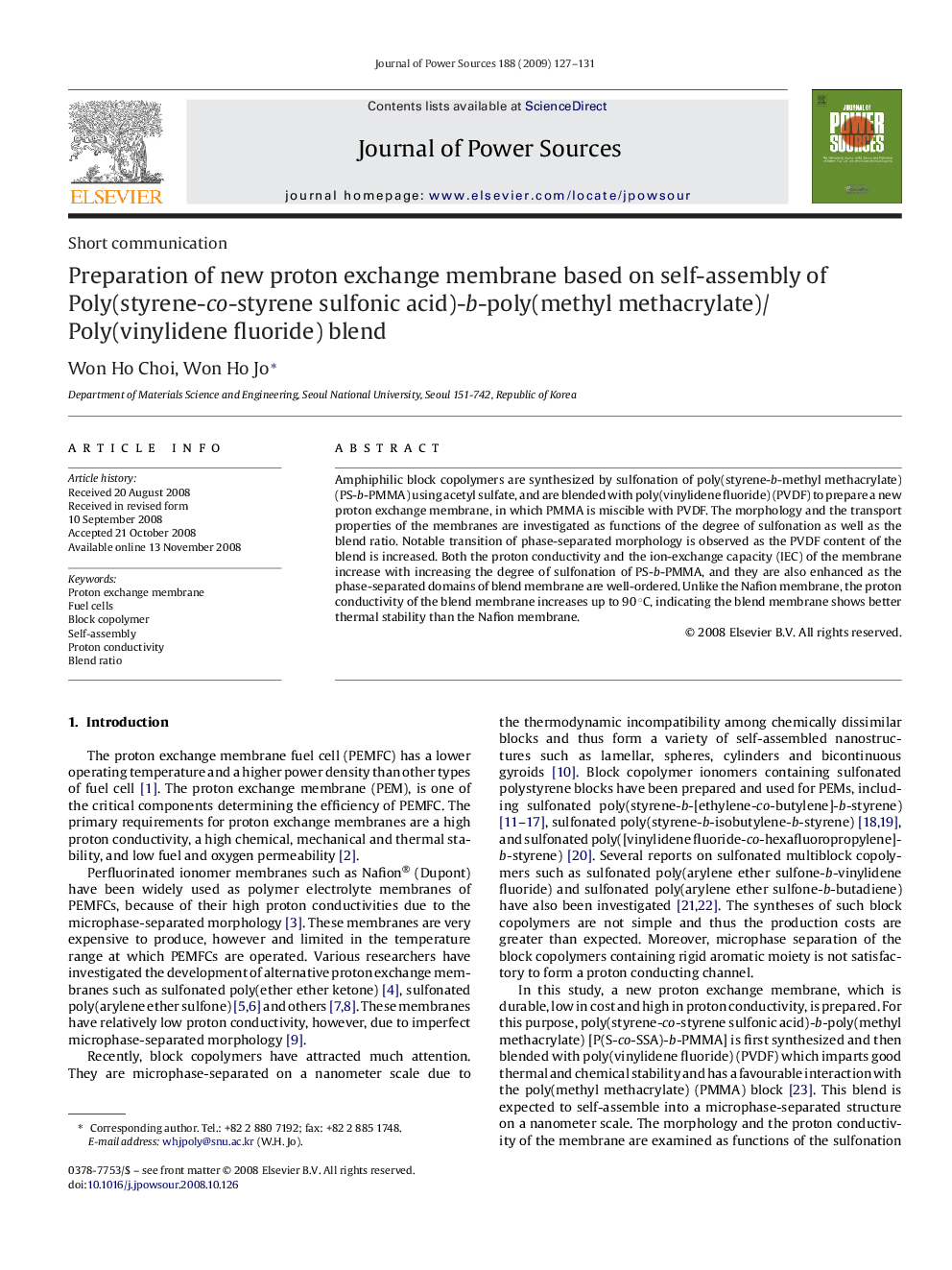| Article ID | Journal | Published Year | Pages | File Type |
|---|---|---|---|---|
| 1294324 | Journal of Power Sources | 2009 | 5 Pages |
Amphiphilic block copolymers are synthesized by sulfonation of poly(styrene-b-methyl methacrylate) (PS-b-PMMA) using acetyl sulfate, and are blended with poly(vinylidene fluoride) (PVDF) to prepare a new proton exchange membrane, in which PMMA is miscible with PVDF. The morphology and the transport properties of the membranes are investigated as functions of the degree of sulfonation as well as the blend ratio. Notable transition of phase-separated morphology is observed as the PVDF content of the blend is increased. Both the proton conductivity and the ion-exchange capacity (IEC) of the membrane increase with increasing the degree of sulfonation of PS-b-PMMA, and they are also enhanced as the phase-separated domains of blend membrane are well-ordered. Unlike the Nafion membrane, the proton conductivity of the blend membrane increases up to 90 °C, indicating the blend membrane shows better thermal stability than the Nafion membrane.
